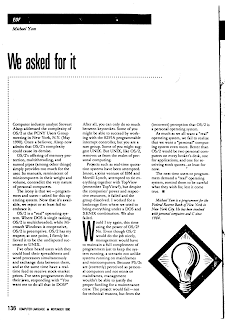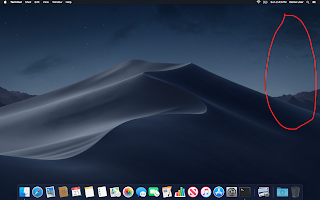Apple's Busy End of Year

When IBM produced their desktop operating system -- OS/2 -- it was with a mainframe mindset. That hurt more than it helped, and OS/2 failed against Microsoft, a company with a desktop mindset. Ironically, when Microsoft produced their handheld operating system -- Win CE -- the desktop mindset caused them to fail against Palm, a company with a handheld mindset. The lessons are obvious. Don't cram a mainframe into a desktop. Don't cram a desktop into a handheld. Prowess in one domain can be baggage in another. For a deep retrospective on the failure of OS/2, see Ars Technica: Half an operating system: The triumph and tragedy of OS/2 . For a shorter take, click on the "We asked for it" image to read my essay which appeared in Computer Language November 1990. And for a riveting read on Palm's battle with Microsoft and the struggle to IPO, visit the Internet Archive for Piloting Palm , by David Pogue and Andrea Butter. This year end, we s...














